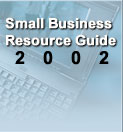 |
| |
| |
| |
| |
| |
| |
| |
| |
| |
| |
| |
| |
| |
| |
| |
|
Starting Your Business/Keeping Tax RecordsWhat are Business ExpensesEmployee Pension/Retirement PlansRetirement plans are savings plans that offer you tax advantages to set aside money for your own and your employees' retirement. They include profit-sharing plans, which let your employees or their beneficiaries share in the profits of your business.
A Simplified Employee Pension (SEP) is a written plan that allows you to make deductible contributions toward your own and your employees' retirement without getting involved in more complex retirement plans. A corporation also can have a SEP and make deductible contributions toward its employees' retirement. But some advantages available to Keogh and other qualified plans, such as the special tax treatment that may apply to lump sum distributions, do not apply to SEPs. Under a SEP, you make the contributions to an individual retirement arrangement (called a SEP-IRA), which is owned by you or your common-law employee. Visit our website for updated information on SEP Contribution and Deduction Limits, Reporting SEP Contributions on Form W-2. A SIMPLE plan (Savings Incentive Match Plan for Employees) is a written salary reduction arrangement that allows a small business (an employer with 100 or fewer employees) to make elective contributions to a SIMPLE retirement account on behalf of each eligible employee. An eligible employer is generally not allowed to maintain another retirement plan. Setting Up a SIMPLE Plan If an employer has 100 or fewer employees who are paid at least $5,000 by the employer in the preceding year, the employer may be able to set up a SIMPLE plan on behalf of eligible employees. The plan can be either of the following:
The SIMPLE plan generally must be the only retirement plan of the employer to which contributions are made, or benefits are accrued, for service in any year beginning with the year the SIMPLE plan becomes effective. Contributions to a SIMPLE plan are deductible by the employer and excluded from the gross income of the employee. For more information on SIMPLE Contribution Limits, visit our website. Qualified Plans (Keogh Plans) A qualified employer plan set up by a self-employed individual is sometimes called a Keogh or HR-10 plan. A sole proprietor or a partnership can set up a qualified plan. A common-law employee or a partner cannot set up a qualified plan. The plans described here can also be set up and maintained by employers that are corporations. All the rules discussed here apply to corporations except where specifically limited to the self-employed. The plan must be for the exclusive benefit of employees or their beneficiaries. A qualified plan can include coverage for a self-employed individual. A self-employed individual is treated as both an employer and an employee. As an employer, you can usually deduct, subject to limits, contributions you make to a qualified plan, including those made for your own retirement. The contributions (and earnings and gains on them) are generally tax free until distributed by the plan. For information on Kinds of Qualified Plans, Plan Approval and Deduction Limits, visit our website. Individual Retirement Arrangements An individual retirement arrangement (IRA) is a personal savings plan that allows you to set aside money for your retirement or for certain education expenses. You do not have to set up IRAs for your employees or make contributions for them. You may be able to deduct your contributions, depending on the type of IRA and your circumstances. Generally, amounts in an IRA, including earnings and gains, are not taxed until they are distributed. In some cases, your earnings and gains may not be taxed at all if they are distributed according to the rules. For more information on IRA, see Publication 590 Individual Retirement Arrangements. Important References: Publication
535 Business Expenses
|